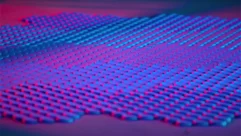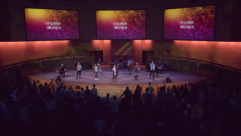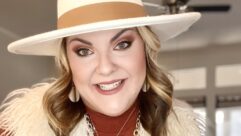 On this edition of the SVC Podcast, Contributing Editor Bennett Liles completes his conversation with Roland Dutzmann of AcousTech and Nate Carter AVL engineer at Charis Bible College about outfitting The Auditorium, the institution’s new 3200-seat worship, performance and teaching space. They discuss new facility’s lighting system, projection, production communication and RF coordination for all of its wireless IEM and microphones.
On this edition of the SVC Podcast, Contributing Editor Bennett Liles completes his conversation with Roland Dutzmann of AcousTech and Nate Carter AVL engineer at Charis Bible College about outfitting The Auditorium, the institution’s new 3200-seat worship, performance and teaching space. They discuss new facility’s lighting system, projection, production communication and RF coordination for all of its wireless IEM and microphones.
FOR MORE: GO TO PART 1
Links:
- AcousTech – audio, video and lighting in Franktown, Colorado
- Charis Bible College in Woodland Park, Colorado
- Panasonic PT-RZ 21 projectors
- Countryman B3 omnidirectional headset mic
- Shure ULX-D wireless mic system
Transcript
In the Mountains of Colorado, Charis Bible College just completed the crown jewel for their campus. The Auditorium, a 3200-seat facility for worship and teaching was completely equipped for sound, video and lighting. Nate Carter and Acoustech’s Roland Dutzmann return this week with the story on how it all came together. Next up on the SVC Podcast.
Roland and Nate, good to have you back with us for Part 2 on the SVC Podcast.
Nate: Yeah.
Roland: Thank you.
Yes from Charis Bible College in Woodland Park, Colorado. Last week we talked about the sound system, the Klang monitoring and how you get all of that up and running and checked out for a performance. What we haven’t talked about yet is the lighting system. There are lots of lighting effects with live music so how is the lighting system set up and what can you do with it?
Roland: I’ll start.
Nate: Yeah.
Roland: And then you can go into the how to use it.
Nate: Okay.
Roland. The lighting system, for one thing there is a complete catwalk system in the auditorium, which of course it great, so almost everything is up there. The lighting system it all LED fixtures. We’ve got Blizzard fixtures, we have Chauvet fixtures, we have high-end movers; just a variety of color washes with zoom. What do we have, 18 moving fixtures?
Nate: Yeah.
Roland: Yeah, at this point.
Nate: We have 18 Blizzards.
Roland: Thirty-six ellipsoidals.
Nate: Yeah.
Roland: All LEDs from different points of the catwalk. There are, up in the catwalks, 42 or 44 are 20-amp power circuits. All of the power for theatrical lighting is on a contactor panel so one switch turns the power on and you can shut it off after events so your electronics aren’t running 24/7. They’ve got under the screens, there are soffits which color-wash the walls with high-power LED bar fixtures. [Timestamp: 2:09]
Yeah those look beautiful. They really look great in the pictures.
Roland: Thank you. Everything is, of course, controlled by DMX. Every catwalk has multiple jacks of four individual DMX universes that are all through a distribution system, plus they have the ability to add up to eight more DMX channels over CAT as needed for bigger events. And they do bigger events where they get additional lighting and mount it up there in the catwalks for their productions and that. They’ll get extra fixtures, so it’s set up to be able to handle all that. And also what, we’ve got 200 amps of power?
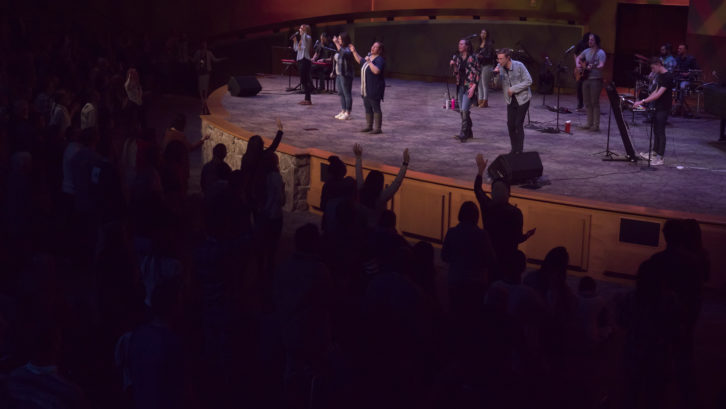
Nate: Yeah.
Roland: Additional power in the catwalks and on the stage for large productions.
Nate: On the floor.
Roland: So a lot of thinking and planning and morphing in the design went into all of that as well.
Nate: Those were not originally there, but by the time they implemented that they’d already decided “we want to do these types of productions.” So it’s like well, we’d better run power.
Roland: Yeah. And the main controller is a Road Hog – high-end Road Hog console. [Timestamp: 3:20]
OK and you have a very impressive projection setup up above those lighted soffits. Was there any challenge at all to keeping the lighting spill off of the projection screens?
Roland: No real problems, just how you aim the fixtures and what they are.
So what have you got up there for projection?
Roland: The three main projectors up in front, left/center/right, are Panasonic PTRZ21; 21,000 lumen, 3-chip DLP laser projectors. Then they also have a fourth projector that’s up in the back of the balcony in the center for stage view. That’s a bit smaller screen. That’s a single-chip DLP that’s an 8,500 lumen EIKI, an 815U. [Timestamp: 4:06]
And how do you get the video fed to the projectors?
Roland: Everything is HD-SDI out of the control room. In there you kind of go backwards here a little bit to where does it start. They’ve got a Black Magic broadcast mixer for ME and then they have the Blackmagic 2ME control surface. We’ve got a 40 x 40 HD-SDI matrix router where they can have presets for different functions and events so everything goes where you need it to go. So all video sources, all cameras, all computers, everything, go into there. All outputs from there feed the projectors. They feed recording, they feed the streaming, they feed other areas of the building so everything is routed and everything is HD-SDI. Right now it’s all 3G and with the upgrade path to going full 4K at some point. [Timestamp: 5:02]
That’s really good for not having to fool with a lot of signal conversion.
Roland: Yes.
Nate: Yeah.
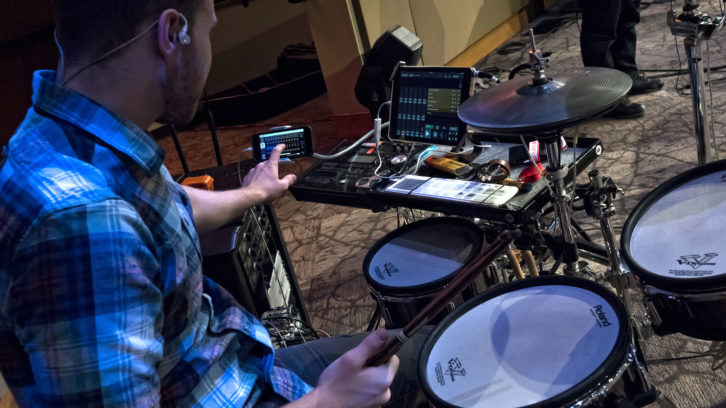
And so when you’re doing an event in there how does the production crew communicate?
Nate: There’s a – I think it’s a Pro Intercom System that was installed with the original setup, which is essentially a two-wire intercom system.
Roland: It’s three-channel at the moment.
Nate: Yeah. The Pro intercom, nice quality. The audio quality is great. We’ve had to expand. You know, you design a system to go into a room and you’re like this is what we need. And then by the time you go to install, the people that sign the checks are like, “Actually we want to do this too and that too.” So we’ve also linked off that with a Clearcom or RME. I think it’s a DX201 or 210. We operate like a roamer cam and a steady cam for live production quite often. So the need for wireless coms became pretty quickly needed. [Timestamp: 5:55]
You’ve got a whole lot of live music going on so how do you mic the pastors and the performers?
Nate: The room is kind of designed and built to isolate, acoustically, the stage so you don’t really have a lot of feedback issues or having to carve your EQ to fix much sound coming back to the stage. So I think at present we’re using a Countryman B3 Omni. It’s a good-sounding mic and it’s pretty smooth, nice response. And that is generally what anyone speaking on stage would use. [Timestamp: 6:23]
They must be because a lot of people use those.
Nate: Yeah.
And for all the wireless gear you’ve got, you’ve got intercom, you have mics. How do you handle RF coordination?
Nate: Very carefully. [Laughter]
Roland: All the wireless mics are Shure ULX-D’s and we’ve got, I believe it’s over 50 channels between the two buildings. We’ve got a lot of portable units in portable racks that can go into individual classrooms because they record every class. But rather than having them built into every class, which would be even way more channels, they bring them in as needed. And then of course they can bring those up for big productions. But there are over 50 channels.
Nate: Easily.
Roland: And that was done via Wireless Workbench, but also initially I was in touch with Shure and had them go ahead and give us a frequency list. And then we just had to coordinate that between Phase I and Phase II.
Nate: It’s not really been an issue. So in Phase I we implemented the J50 band, the Shure ULX-D. And then some months after that the FCC went through and was like, “Oh, by the way. We’re going to sell of everything 601 and above.” So we lost part of the J50 band.
Roland: So the J50’s had to go below the 600.
Nate: With the diversity of that we were still able to just rechannel stuff and move it all. So we didn’t have to give up channels that we currently use. We just had to kind of like replan where everything would sit. [Timestamp: 7:51]
You’ve got the wireless gear, a lot of lighting stuff and sound. How do you keep the power for the audio and lighting gear separate so they don’t cause trouble for each other?
Roland: The power system for audio and video comes off its own subtransformer and its own panel. There are probably 30 circuits of audio/video power. And then the lighting is its own separate power off its own panel. That again, total, including the circuits on the stage, I think it’s 48 20-amp circuits for lighting power plus, of course, the as-needed additional 200 amps, three-phase, in the catwalk and on stage. [Timestamp: 8:35]
Yeah, it sounds like that was a good idea because you’ve already told about a couple of times when they added things. I was going to ask if there were any surprises or changes during the installation but I think that was a continuing story.
Nate: How much time do you have? [Laughter] One of the things that we were really fortunate with in Roland is because of the timeline for basically the install the phases of the system had to be put in at certain times. Just the project planning of when actual equipment got ordered to be put in place. Even as we move forward in time, if we needed to make some adjustments, oftentimes we could because that equipment wasn’t sitting in a room yet somewhere. It hadn’t been ordered yet.
Roland: Right. Right.
Nate: So that was super helpful.

Roland: Yeah. On a project like this, those critical pieces were, because of construction, it’s not ready to go in yet anyway. I won’t wait until the last minute, but I’ll wait as long as I can in case there are changes. The projectors were chosen from the beginning of the install. Some of the lighting fixtures morphed. Some of the video processing gear, like the matrix router, etc., changed while we were already in process of our installation which took about eight months total for everything that we did in here. And part of that is we’re just a step behind the contractors who were building the building. So they had to have things ready for us to be able to do our part, so just keeping that coordinated did allow us some grace time for making changes. [Timestamp: 10:08]
That is a massive project with a lot of different things to consider along with the ripple effect when you make one change and how it affects other things.
Roland: Right.
It’s cool the way you got it all worked out. I was kind of wondering. You’ve got this all done, Roland so what’s coming up next in projects for Acoustech?
Roland: Well a variety of things right now. I think the most interesting thing, which we’re actually starting next week, it’s an old warehouse. I don’t remember what it used to do, but it was built about 1900 in downtown Denver. And a church purchased the building to not only have church in it but it’s going to be an event center that’s handled by an outside agency that does all the bookings and coordination. So on weekends or on Sundays it will be a church with full audio, video, lighting production and then during the week it could be anything – corporate events, weddings, whatever – with obviously a much nicer AV system than your typical event center. And it’s in the downtown Denver up-and-coming, a lot of new construction and renovation going on. So it’s a kind of an interesting little project. [Timestamp: 11:17]
Well, it sounds like it and I know you’re glad about the way this one turned out. It’s been great having both of you on here to talk about this one. We’ve had Roland Dutzmann of Acoustech and Nate Carter, the Charis Bible College AVL engineer coming to us from Woodland Park, Colorado and the new Auditorium, a 3200 seat worship, performance and teaching space. Great hearing about how you got it all going and thanks for taking the time to tell us about it.
Nate: Absolutely.
Roland: Our pleasure. Thank you, Bennett.
Charis Bible College has the facility they need with sound, video and lighting to serve them well into the future. Acoustech and Klang system monitoring helped them get it done. Get back with us next week for another AV installation project on the next SVC Podcast.


